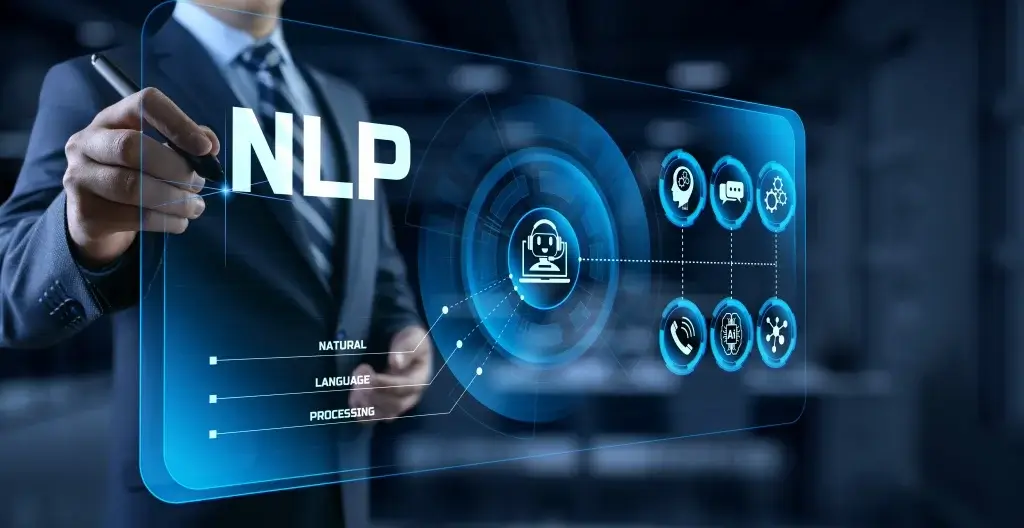Natural Language Processing NLP: What it is and why it matters
There is relatively little work on adversarial examples for more low-level language processing tasks, although one can mention morphological tagging (Heigold et al., 2018) and spelling correction (Sakaguchi et al., 2017). Visualization is a valuable tool for analyzing neural networks in the language domain and nlp analysis beyond. Early work visualized hidden unit activations in RNNs trained on an artificial language modeling task, and observed how they correspond to certain grammatical relations such as agreement (Elman, 1991). Figure 1 shows an example visualization of a neuron that captures position of words in a sentence.
- Basic NLP tasks include tokenization and parsing, lemmatization/stemming, part-of-speech tagging, language detection and identification of semantic relationships.
- Second, minimizing this distance cannot be easily formulated as an optimization problem, as this requires computing gradients with respect to a discrete input.
- Next , you know that extractive summarization is based on identifying the significant words.
- For instance, extending the categories in Cooper et al. (1996), the GLUE analysis set for NLI covers more than 30 phenomena in four coarse categories (lexical semantics, predicate–argument structure, logic, and knowledge).
Machine-learning models can be predominantly categorized as either generative or discriminative. Generative methods can generate synthetic data because of which they create rich models of probability distributions. Discriminative methods are more functional and have right estimating posterior probabilities and are based on observations.
Frequently Asked Questions
Your device activated when it heard you speak, understood the unspoken intent in the comment, executed an action and provided feedback in a well-formed English sentence, all in the space of about five seconds. The complete interaction was made possible by NLP, along with other AI elements such as machine learning and deep learning. While natural language processing isn’t a new science, the technology is rapidly advancing thanks to an increased interest in human-to-machine communications, plus an availability of big data, powerful computing and enhanced algorithms. IBM Watson’s NLU service provides a cloud-based solution for various NLP tasks.

Thus a few studies report human evaluation on their challenge sets, such as in MT (Isabelle et al., 2017; Burchardt et al., 2017). Finally, a few studies define templates that capture certain linguistic properties and instantiate them with word lists (Dasgupta et al., 2018; Rudinger et al., 2018; Zhao et al., 2018a). Template-based generation has the advantage of providing more control, for example for obtaining a specific vocabulary distribution, but this comes at the expense of how natural the examples are. Challenge sets are usually created either programmatically or manually, by handcrafting specific examples. Often, semi-automatic methods are used to compile an initial list of examples that is manually verified by annotators.
Challenge Sets
Singh et al. (2018) showed human raters hierarchical clusterings of input words generated by two interpretation methods, and asked them to evaluate which method is more accurate, or in which method they trust more. Others reported human evaluations for attention visualization in conversation modeling (Freeman et al., 2018) and medical code prediction tasks (Mullenbach et al., 2018). One common NLP technique is lexical analysis — the process of identifying and analyzing the structure of words and phrases.
Includes getting rid of common language articles, pronouns and prepositions such as “and”, “the” or “to” in English. In simple terms, NLP represents the automatic handling of natural human language like speech or text, and although the concept itself is fascinating, the real value behind this technology comes from the use cases. It is a discipline that focuses on the interaction between data science and human language, and is scaling to lots of industries. Considering these metrics in mind, it helps to evaluate the performance of an NLP model for a particular task or a variety of tasks. The objective of this section is to discuss evaluation metrics used to evaluate the model’s performance and involved challenges. The MTM service model and chronic care model are selected as parent theories.
At the end, you’ll also learn about common NLP tools and explore some online, cost-effective courses that can introduce you to the field’s most fundamental concepts. The earliest decision trees, producing systems of hard if–then rules, were still very similar to the old rule-based approaches. Only the introduction of hidden Markov models, applied to part-of-speech tagging, announced the end of the old rule-based approach.
More informative human studies evaluate grammaticality or similarity of the adversarial examples to the original ones (Zhao et al., 2018c; Alzantot et al., 2018). Given the inherent difficulty in generating imperceptible changes in text, more such evaluations are needed. Another theme that emerges in several studies is the hierarchical nature of the learned representations. We have already mentioned such findings regarding NMT (Shi et al., 2016b) and a visually grounded speech model (Alishahi et al., 2017). Hierarchical representations of syntax were also reported to emerge in other RNN models (Blevins et al., 2018).
We resolve this issue by using Inverse Document Frequency, which is high if the word is rare and low if the word is common across the corpus. NLP is used for a wide variety of language-related tasks, including answering questions, classifying text in a variety of ways, and conversing with users. An HMM is a system where a shifting takes place between several states, generating feasible output symbols with each switch. The sets of viable states and unique symbols may be large, but finite and known. Few of the problems could be solved by Inference A certain sequence of output symbols, compute the probabilities of one or more candidate states with sequences.
- We need a broad array of approaches because the text- and voice-based data varies widely, as do the practical applications.
- AWS provides the broadest and most complete set of artificial intelligence and machine learning (AI/ML) services for customers of all levels of expertise.
- Stop words can be safely ignored by carrying out a lookup in a pre-defined list of keywords, freeing up database space and improving processing time.
- In this guide, you’ll learn about the basics of Natural Language Processing and some of its challenges, and discover the most popular NLP applications in business.
- Natural Language Processing is an upcoming field where already many transitions such as compatibility with smart devices, and interactive talks with a human have been made possible.
Earlier machine learning techniques such as Naïve Bayes, HMM etc. were majorly used for NLP but by the end of 2010, neural networks transformed and enhanced NLP tasks by learning multilevel features. Major use of neural networks in NLP is observed for word embedding where words are represented in the form of vectors. Initially focus was on feedforward [49] and CNN (convolutional neural network) architecture [69] but later researchers adopted recurrent neural networks to capture the context of a word with respect to surrounding words of a sentence. LSTM (Long Short-Term Memory), a variant of RNN, is used in various tasks such as word prediction, and sentence topic prediction.
The field of study that focuses on the interactions between human language and computers is called natural language processing, or NLP for short. It sits at the intersection of computer science, artificial intelligence, and computational linguistics (Wikipedia). Semantic analysis is the process of understanding the meaning and interpretation of words, signs and sentence structure. This lets computers partly understand natural language the way humans do. I say this partly because semantic analysis is one of the toughest parts of natural language processing and it’s not fully solved yet.
10 Best Python Libraries for Sentiment Analysis (2024) – Unite.AI
10 Best Python Libraries for Sentiment Analysis ( .
Posted: Tue, 16 Jan 2024 08:00:00 GMT [source]
Fan et al. [41] introduced a gradient-based neural architecture search algorithm that automatically finds architecture with better performance than a transformer, conventional NMT models. Event discovery in social media feeds (Benson et al.,2011) [13], using a graphical model to analyze any social media feeds to determine whether it contains the name of a person or name of a venue, place, time etc. Phonology is the part of Linguistics which refers to the systematic arrangement of sound. The term phonology comes from Ancient Greek in which the term phono means voice or sound and the suffix –logy refers to word or speech.
How to remove the stop words and punctuation
Different kinds of linguistic information have been analyzed, ranging from basic properties like sentence length, word position, word presence, or simple word order, to morphological, syntactic, and semantic information. Phonetic/phonemic information, speaker information, and style and accent information have been studied in neural network models for speech, or in joint audio-visual models. Wiese et al. [150] introduced a deep learning approach based on domain adaptation techniques for handling biomedical question answering tasks.
Seunghak et al. [158] designed a Memory-Augmented-Machine-Comprehension-Network (MAMCN) to handle dependencies faced in reading comprehension. The model achieved state-of-the-art performance on document-level using TriviaQA and QUASAR-T datasets, and paragraph-level using SQuAD datasets. The Robot uses AI techniques to automatically analyze documents and other types of data in any business system which is subject to GDPR rules. It allows users to search, retrieve, flag, classify, and report on data, mediated to be super sensitive under GDPR quickly and easily.
This concept uses AI-based technology to eliminate or reduce routine manual tasks in customer support, saving agents valuable time, and making processes more efficient. Natural Language Processing (NLP) allows machines to break down and interpret human language. It’s at the core of tools we use every day – from translation software, chatbots, spam filters, and search engines, to grammar correction software, voice assistants, and social media monitoring tools. Natural language processing goes hand in hand with text analytics, which counts, groups and categorizes words to extract structure and meaning from large volumes of content. Text analytics is used to explore textual content and derive new variables from raw text that may be visualized, filtered, or used as inputs to predictive models or other statistical methods.
This recalls the case of Google Flu Trends which in 2009 was announced as being able to predict influenza but later on vanished due to its low accuracy and inability to meet its projected rates. Since BERT considers up to 512 tokens, this is the reason if there is a long text sequence that must be divided into multiple short text sequences of 512 tokens. This is the limitation of BERT as it lacks in handling large text sequences. We first give insights on some of the mentioned tools and relevant work done before moving to the broad applications of NLP. NLP can be classified into two parts i.e., Natural Language Understanding and Natural Language Generation which evolves the task to understand and generate the text. The objective of this section is to discuss the Natural Language Understanding (Linguistic) (NLU) and the Natural Language Generation (NLG).
